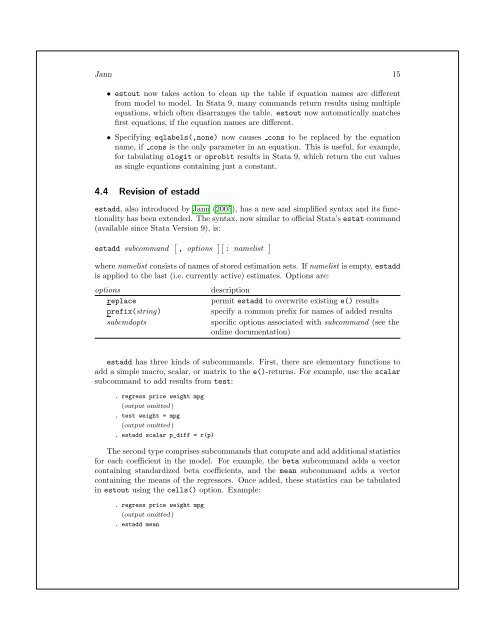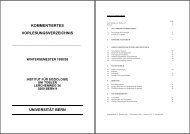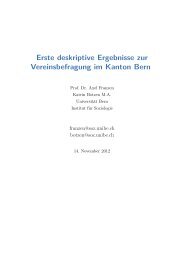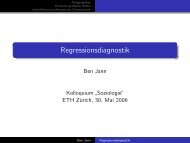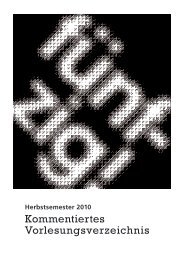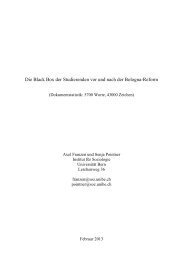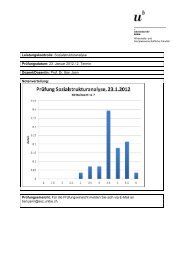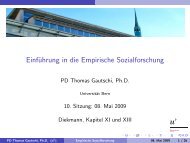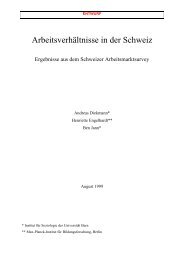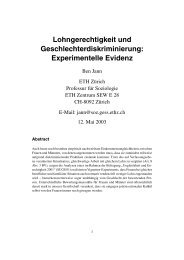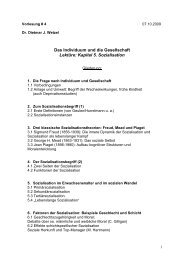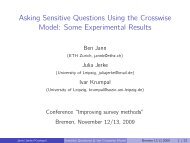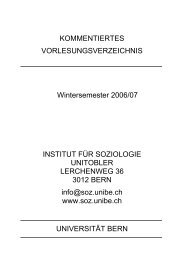Making regression tables simplified
Making regression tables simplified
Making regression tables simplified
Create successful ePaper yourself
Turn your PDF publications into a flip-book with our unique Google optimized e-Paper software.
Jann 15<br />
• estout now takes action to clean up the table if equation names are different<br />
from model to model. In Stata 9, many commands return results using multiple<br />
equations, which often disarranges the table. estout now automatically matches<br />
first equations, if the equation names are different.<br />
• Specifying eqlabels(,none) now causes cons to be replaced by the equation<br />
name, if cons is the only parameter in an equation. This is useful, for example,<br />
for tabulating ologit or oprobit results in Stata 9, which return the cut values<br />
as single equations containing just a constant.<br />
4.4 Revision of estadd<br />
estadd, also introduced by Jann (2005), has a new and <strong>simplified</strong> syntax and its functionality<br />
has been extended. The syntax, now similar to official Stata’s estat command<br />
(available since Stata Version 9), is:<br />
estadd subcommand � , options �� : namelist �<br />
where namelist consists of names of stored estimation sets. If namelist is empty, estadd<br />
is applied to the last (i.e. currently active) estimates. Options are:<br />
options description<br />
replace permit estadd to overwrite existing e() results<br />
prefix(string) specify a common prefix for names of added results<br />
subcmdopts specific options associated with subcommand (see the<br />
online documentation)<br />
estadd has three kinds of subcommands. First, there are elementary functions to<br />
add a simple macro, scalar, or matrix to the e()-returns. For example, use the scalar<br />
subcommand to add results from test:<br />
. regress price weight mpg<br />
(output omitted )<br />
. test weight = mpg<br />
(output omitted )<br />
. estadd scalar p_diff = r(p)<br />
The second type comprises subcommands that compute and add additional statistics<br />
for each coefficient in the model. For example, the beta subcommand adds a vector<br />
containing standardized beta coefficients, and the mean subcommand adds a vector<br />
containing the means of the regressors. Once added, these statistics can be tabulated<br />
in estout using the cells() option. Example:<br />
. regress price weight mpg<br />
(output omitted )<br />
. estadd mean


